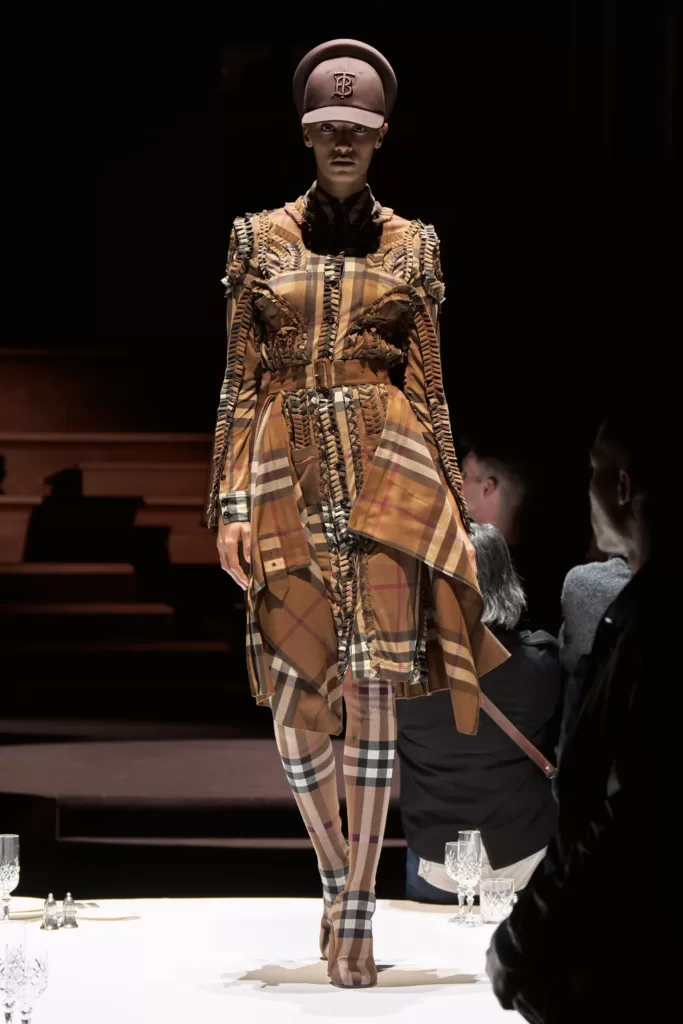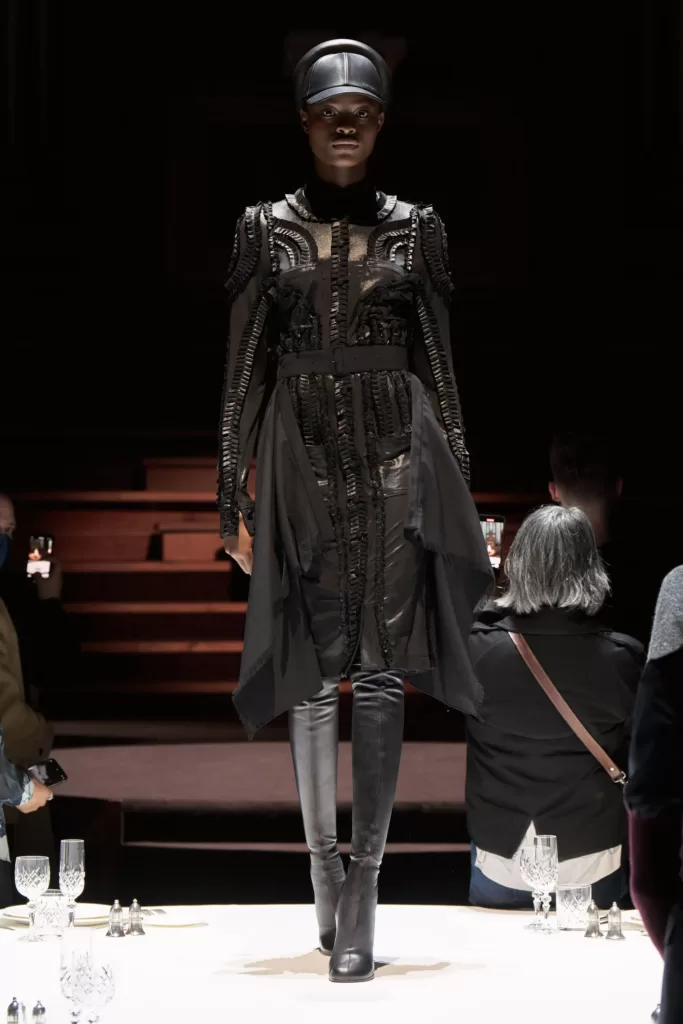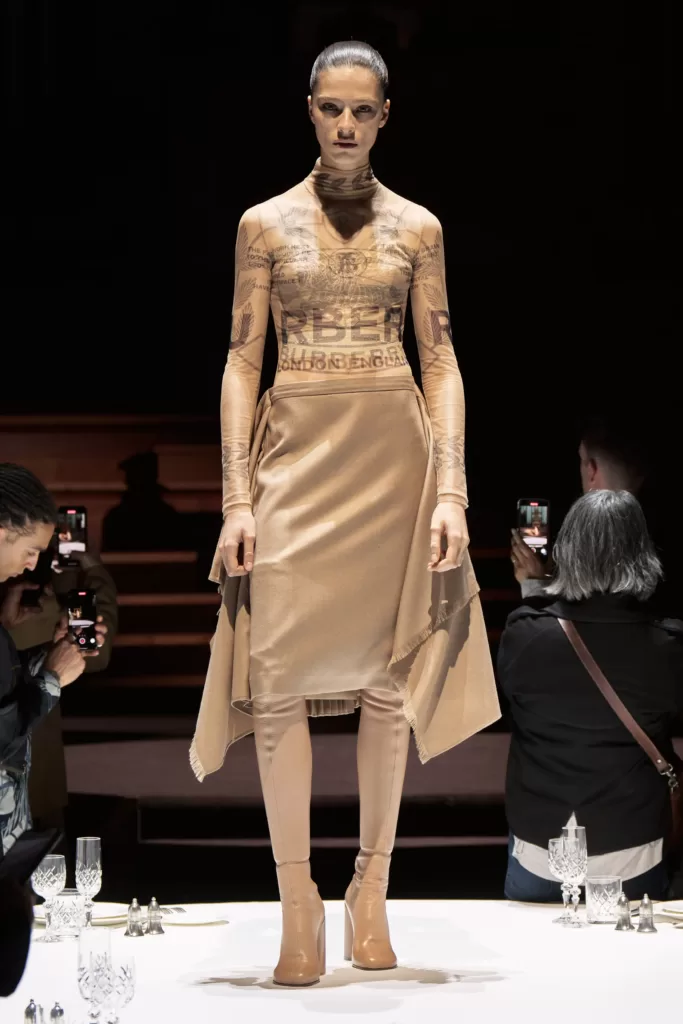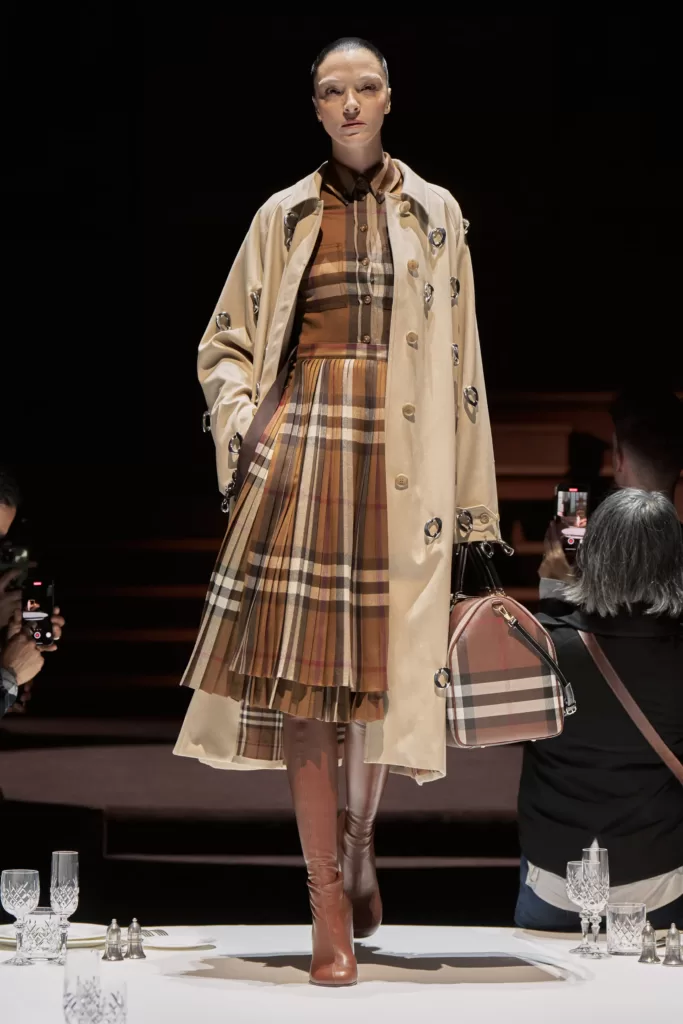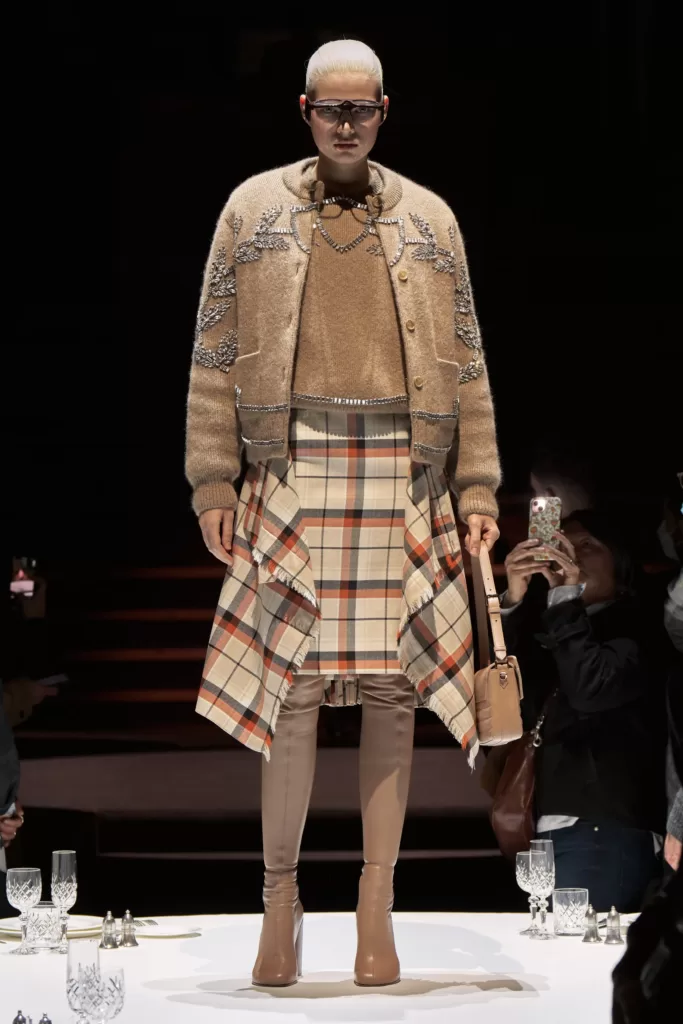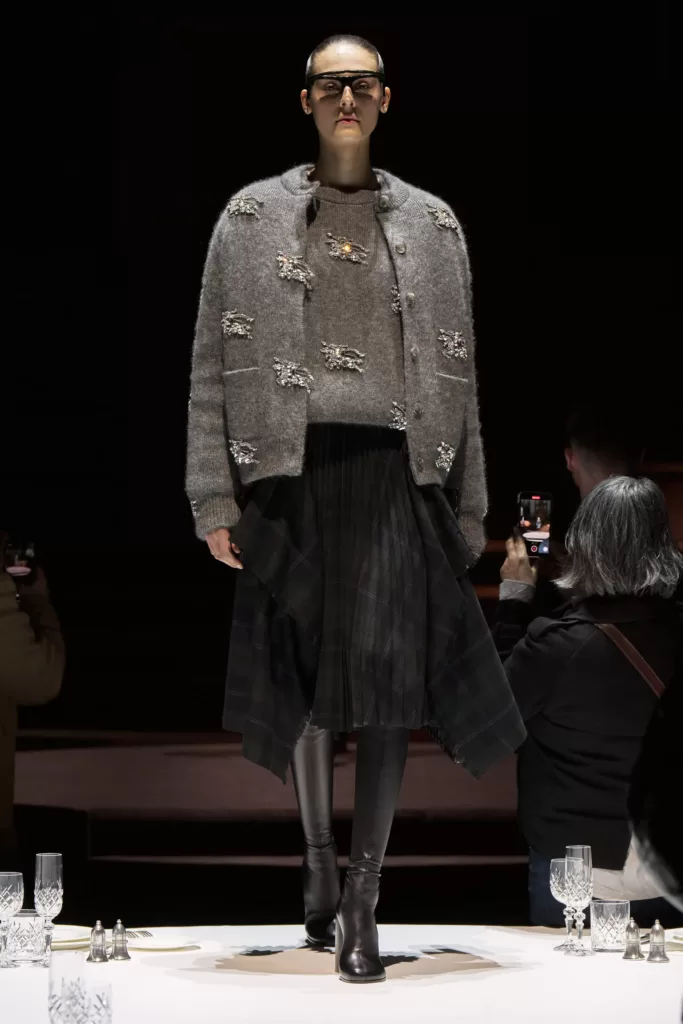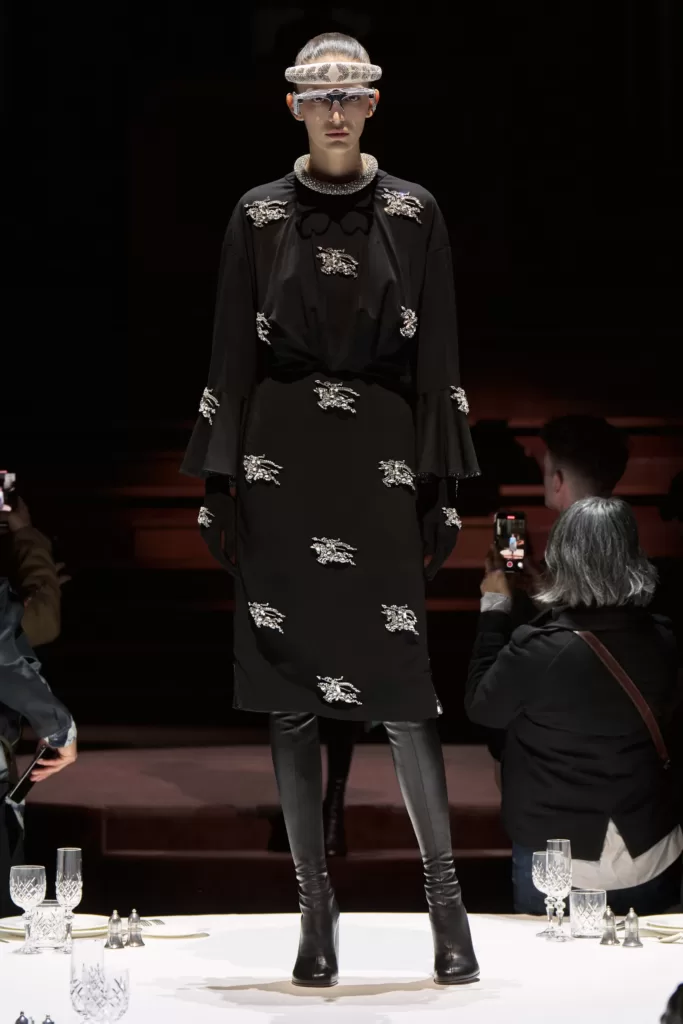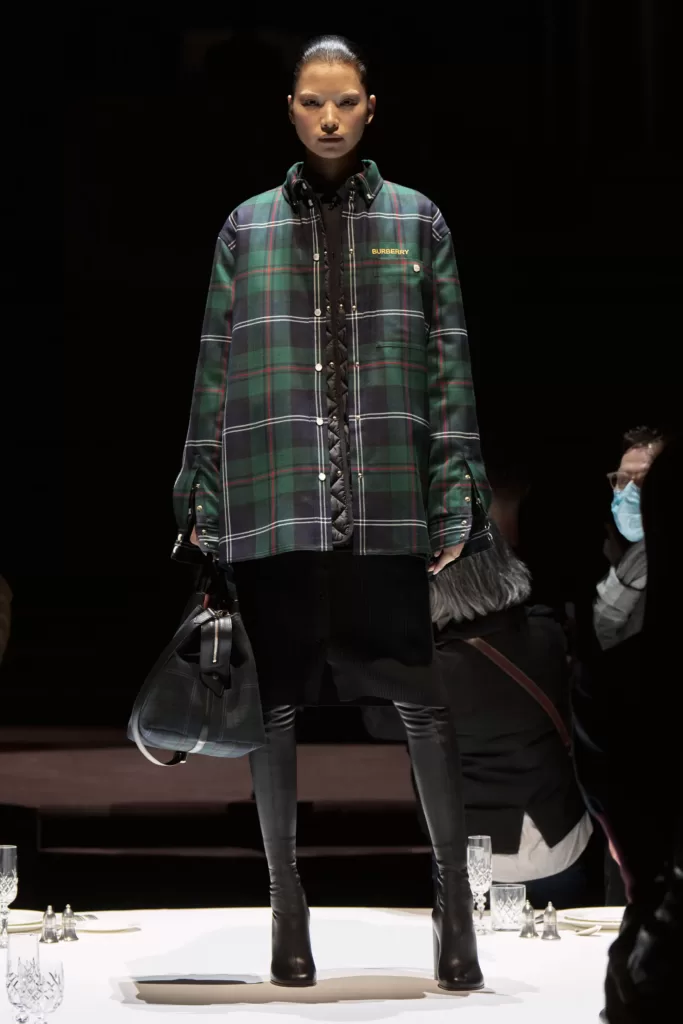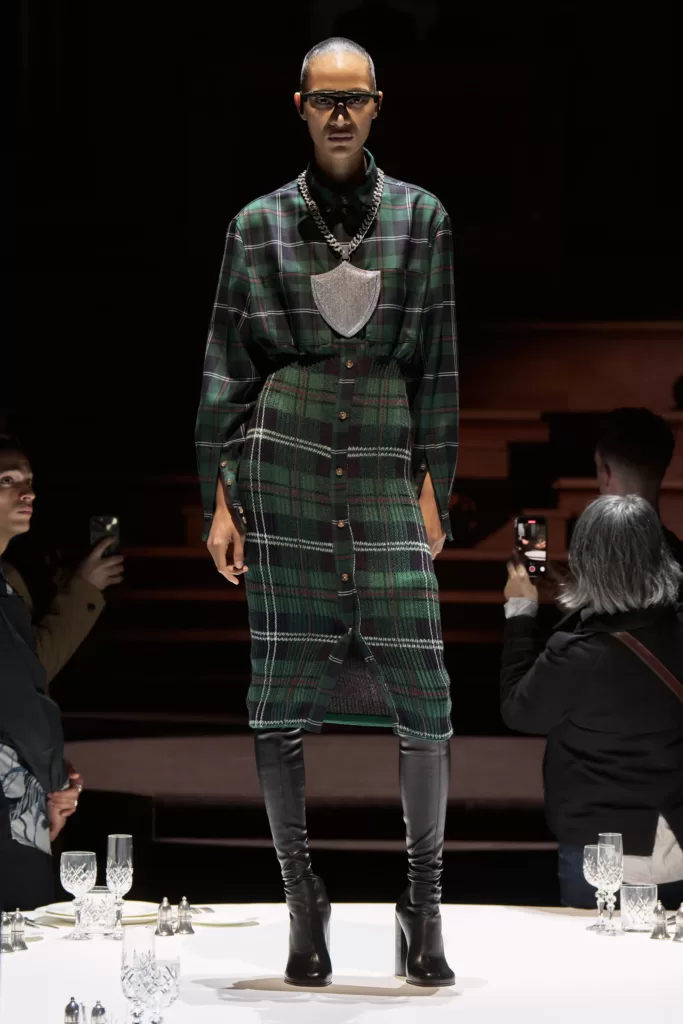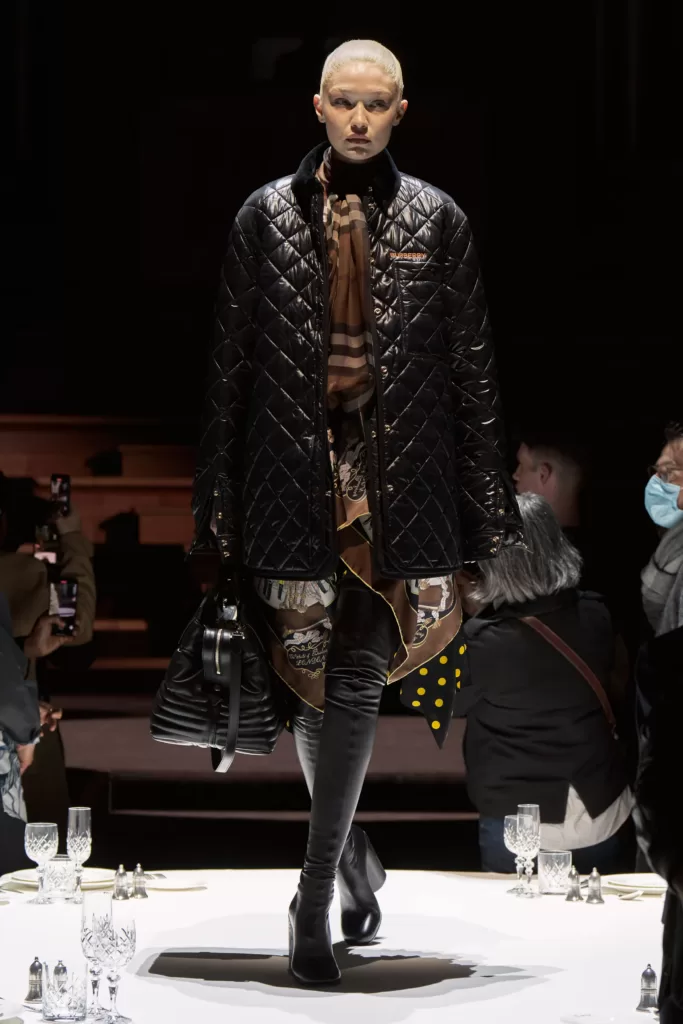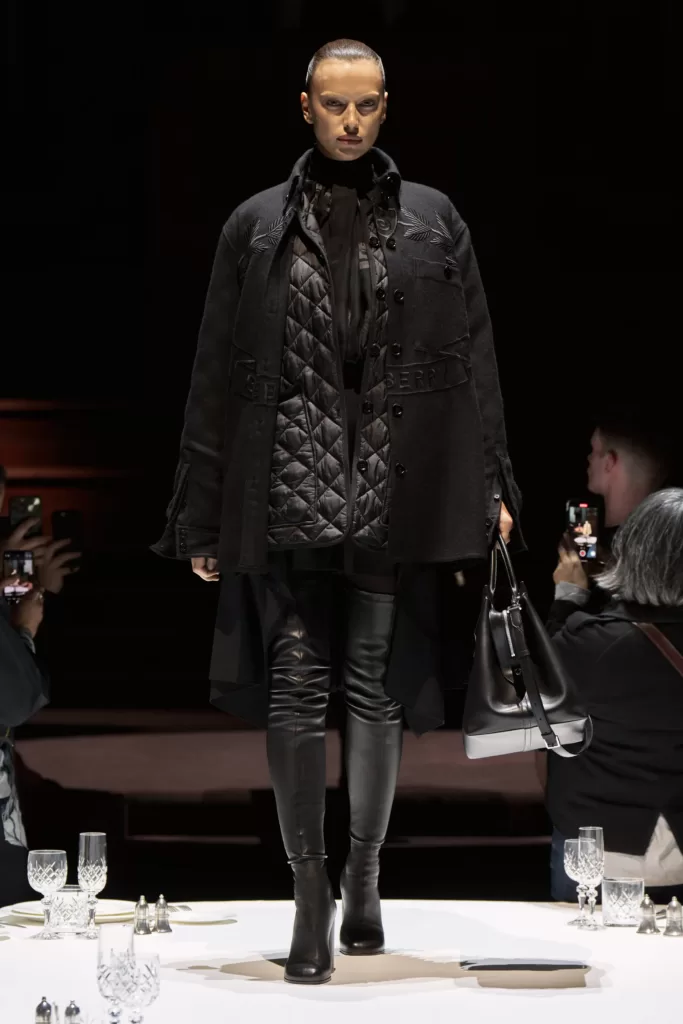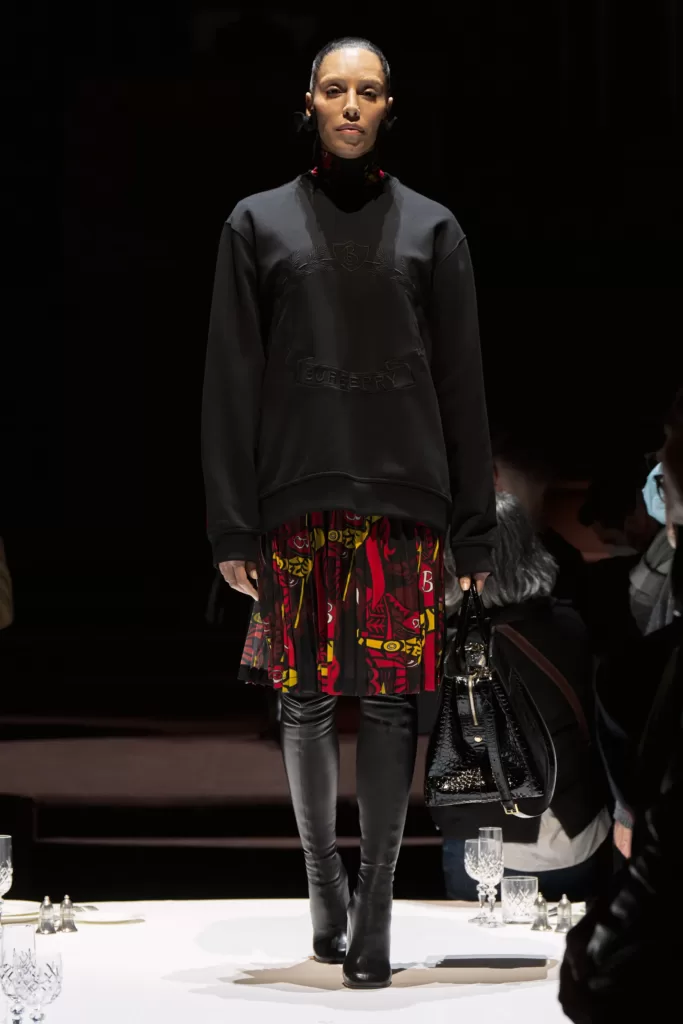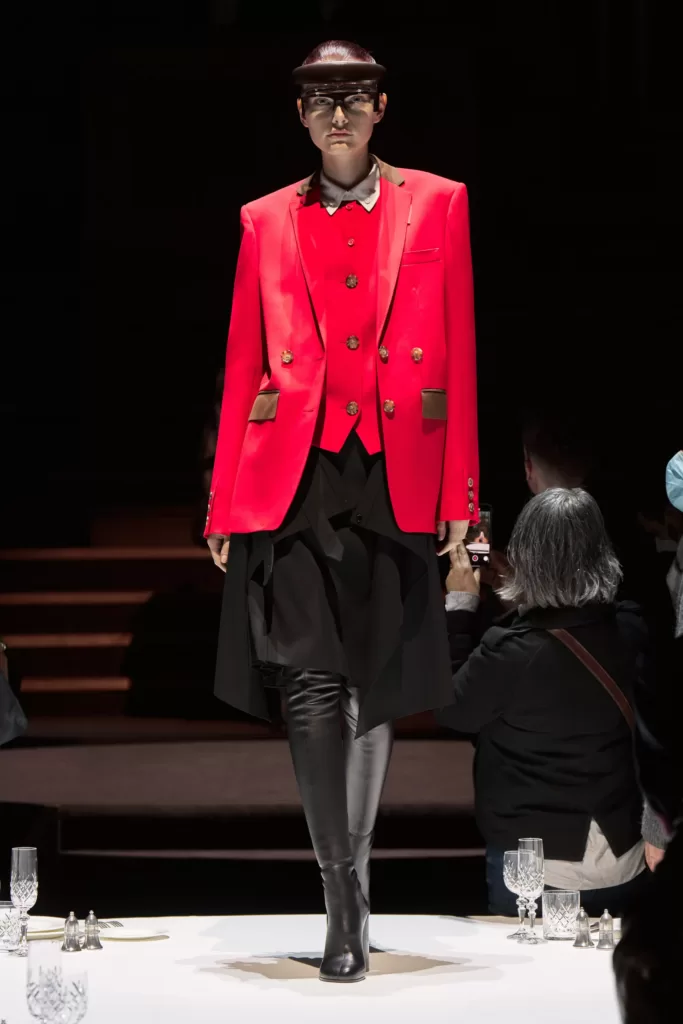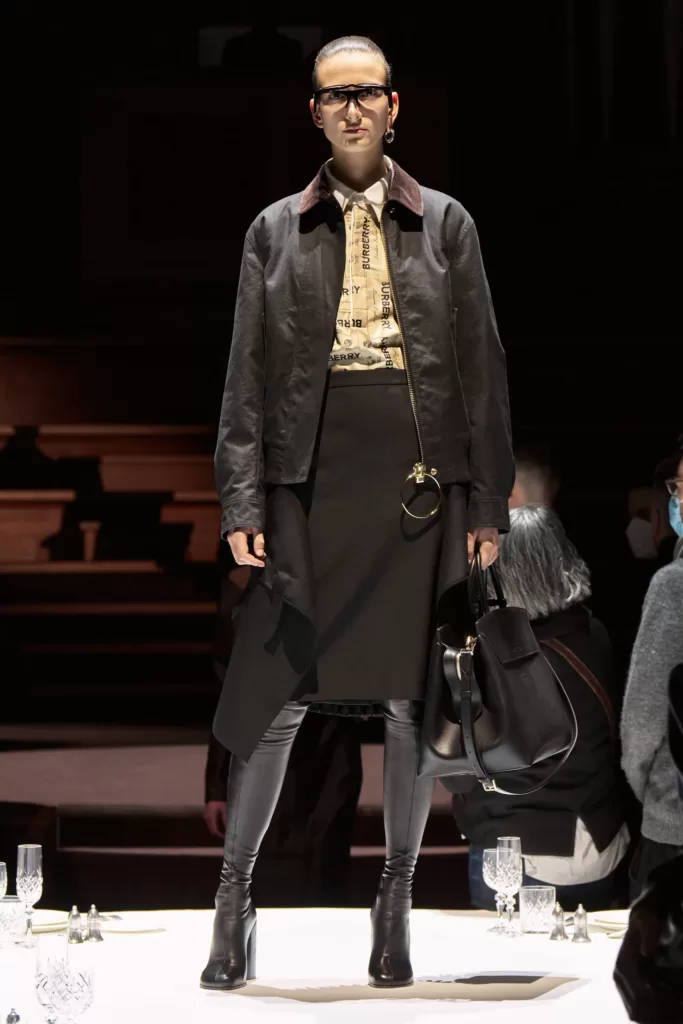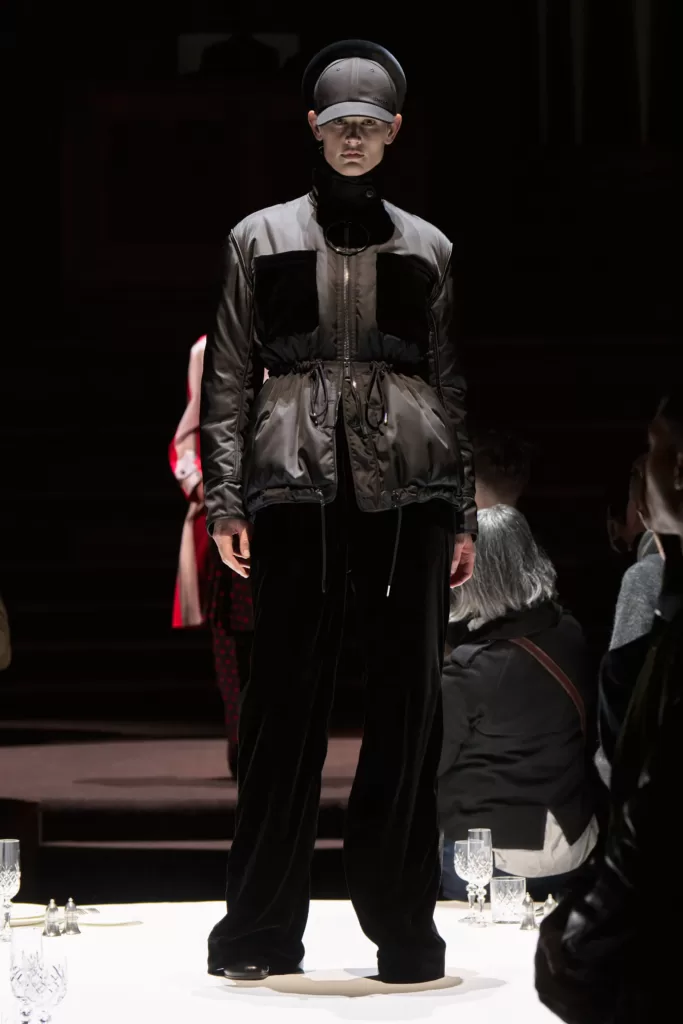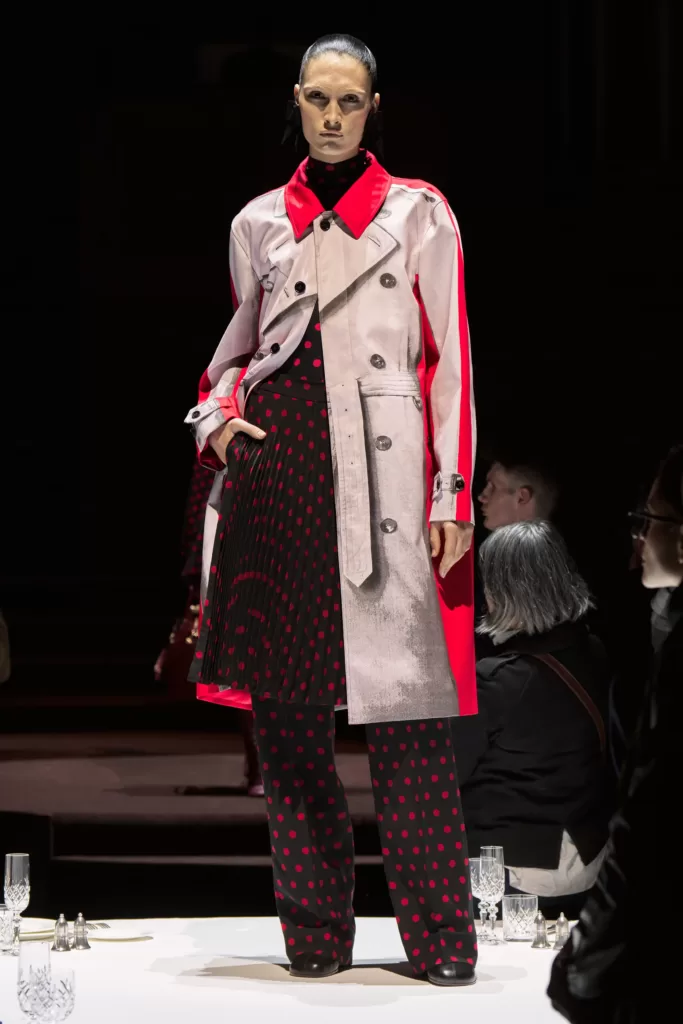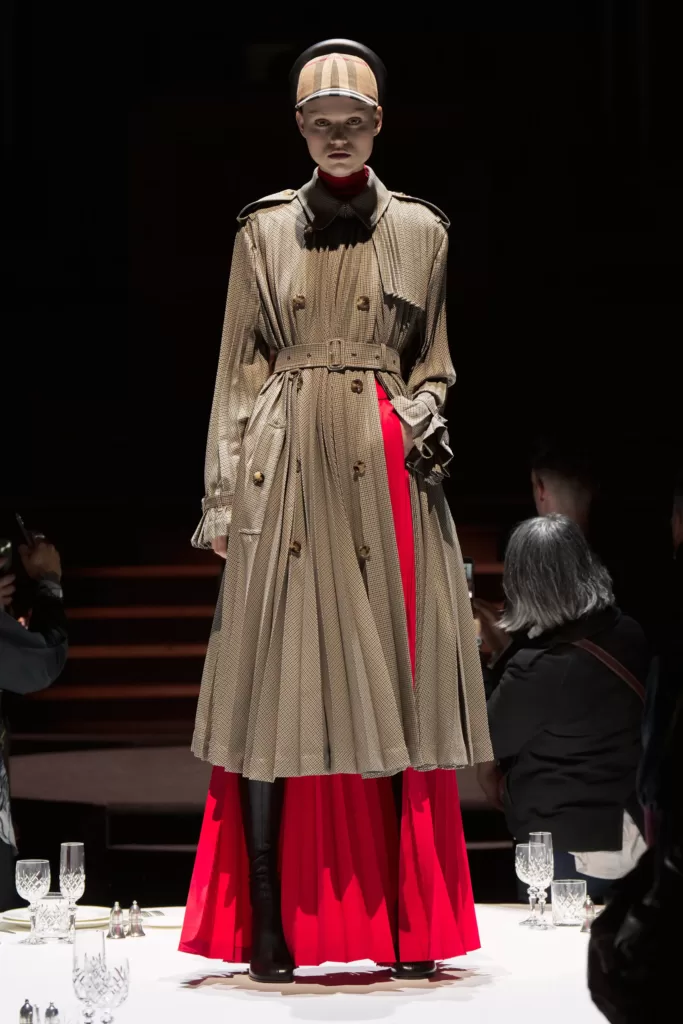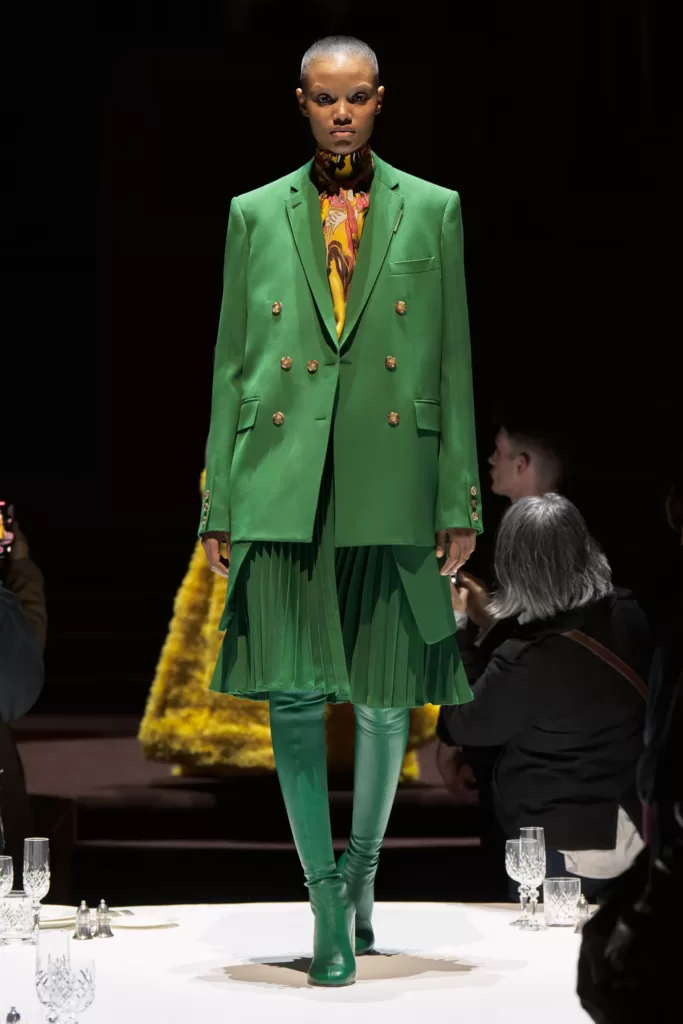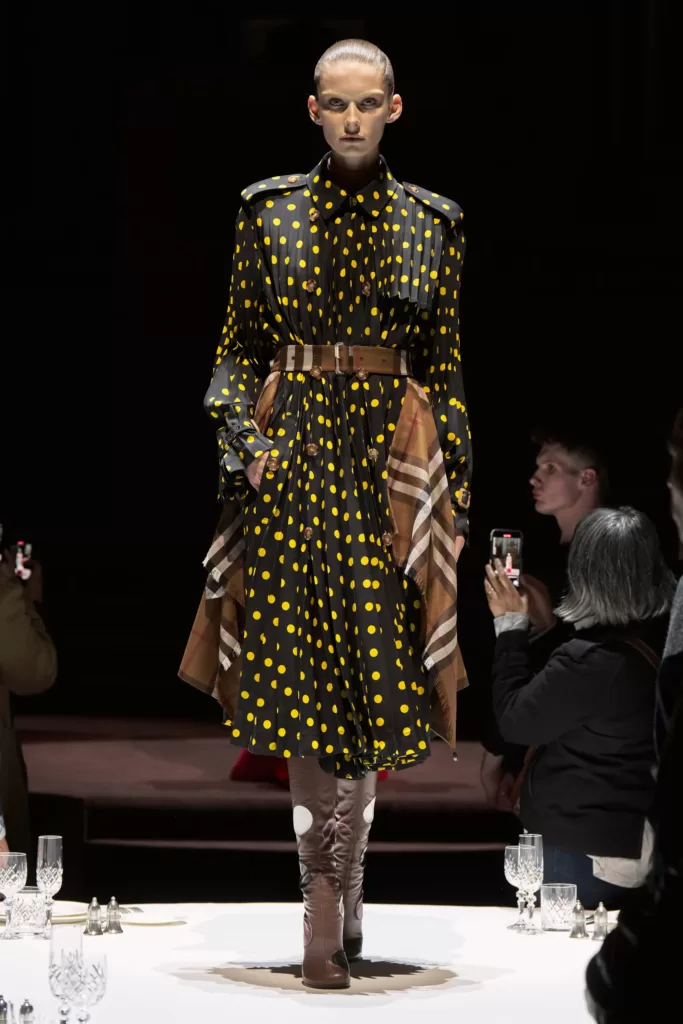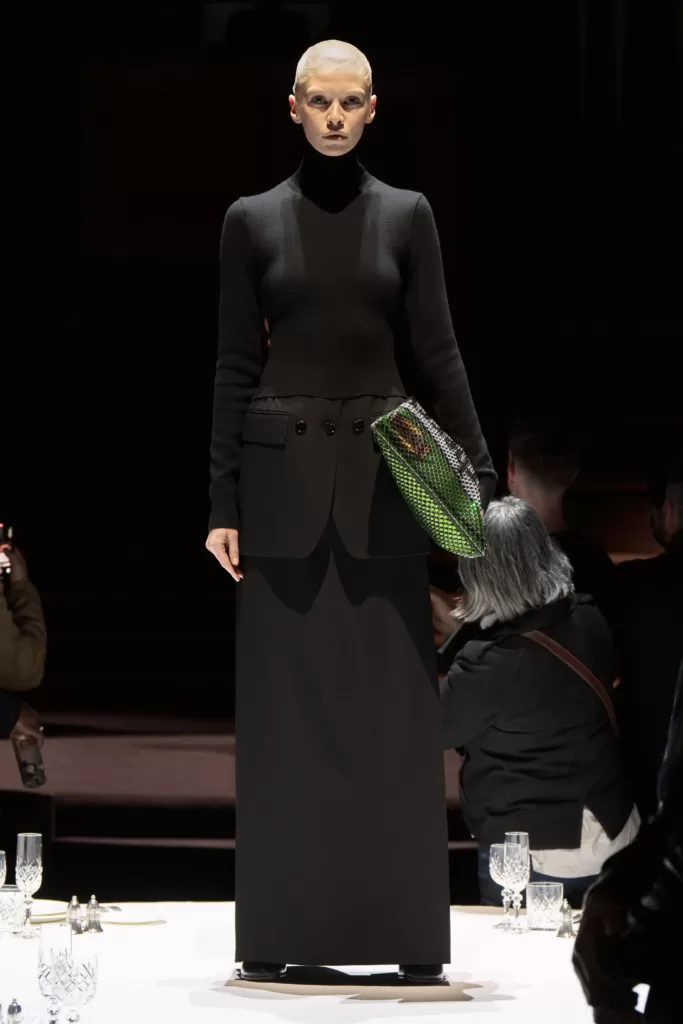
Chaos—the distintegration of norms and boundaries, social and fashion-wise—has reveberated through the ways shows have been done and undone this season. Riccardo Tisci served up his own multi-messaging version of it for Burberry in London—a massive real-life event held at London’s Central Hall Westminster. That is, right across from the Houses of Parliament, a seat of European democracy where, to quote Shakespeare, “Chaos is come again.”
People stood massed together in the dark, un-ranked, unmasked, shuffling back to give way to Riccardo Tisci’s supermodels, friends, and artist-celebrities as they descended from somewhere high up in the wood-paneled auditorium. Clad in the spectrum of Tisci’s ideas about global, generational, and gender non-conforming realities, British tradition and, of course, Burberry checks and trenches, they climbed up to pose on tables which were set with silver and crystal, as if for a country-house dinner. A hundred-strong choir sang, an orchestra played.
“It’s a reconstructed collection of what I find in Burberry, and what I’ve been living as human in this moment in Britain too,” Tisci said before the show. “It’s a different perspective—you know, the way you feel things was a very deep different journey.” That stood as an explanation for the leveling, everyone-together breaking of catwalk convention, except that the event simultaneously managed to be a bombastic reclaiming of Burberry’s corporate position, a landmark of the British fashion business with global reach.
So two collections came out—a menswear one and the women’s. For women, he ran the gamut of trench-and-check daywear through to grand ballgowns, segueing though deconstructed evening trenchcoats. He said he’d pulled it together by focusing on country waxed and quilted coats, and pulling out the symbol of the Burberry Prorsum knight on horseback. There were blanket-skirts and tartan capes. A crystal-embroidered knight rode in tribute to Englishness across a pink twinset.
Across both collections there was a Burberry youth symbol of the moment: a half baseball-cap, surmounted by an Alice band. At times, it looked like an equestrian leather helmet, at others a mad combo of crystal and streetwear.
In a brand as big as this, the demand on a creative director is to keep tons of different people happy, feeding different narratives to groups who know little or nothing about each other. Yesterday, with a drop of the Burberry x Supreme collab, Tisci proved beyond doubt how he can reach fans way beyond the fashion bubble. “It was crazy,” he laughed. “Not just in London, but America, China. The numbers were really big.”
He reflected on how he was initially daunted by paying tribute to Britishness, but now feels much freer about applying his own instincts. “I was scared,” he admitted. “You know, as an Italian, Britain is important—it’s a such an historical country, with so much to say. So at the beginning, it was like the first kiss. It takes time, you know. And now I find my own way.”
Besides, the world—particularly its young people—has turned towards embracing the diversity and inclusivity that Tisci pioneered in fashion from the beginning of his career. “People don’t want to be put in boxes any more. Not just the young generation, but actually people in general. It’s really the wish: people need to be screaming freedom, with what’s going on in the world. I’m trying to be positive,” he concluded. “Sometimes, you want to close your eyes to what’s happening in the world. But, you know, being human together we can change things slowly.”
Vogue.com

